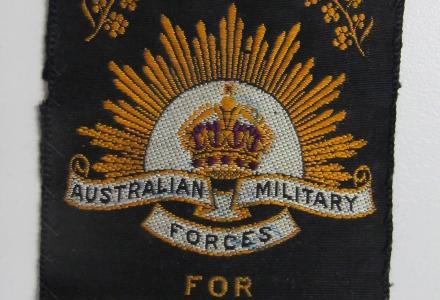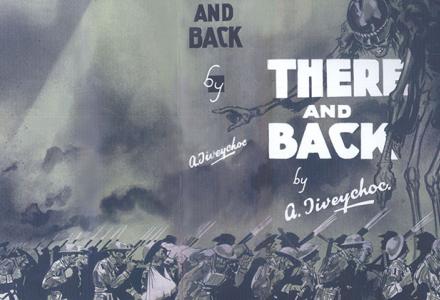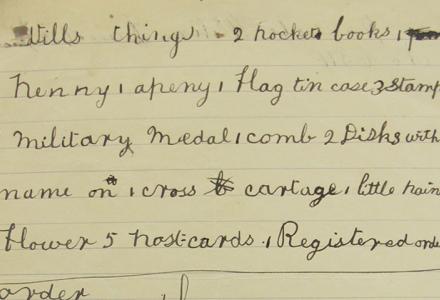Allen Charlie Kingston commanded the Australian War Graves Detachment at Villers-Bretonneux. A Gallipoli veteran, Kingston had seen four years of war and supervised the recovery of hundreds of bodies. Many proved impossible to identify. The corpses were ravaged by battle and the elements and the passage of time had destroyed most, if not all, of their personal effects. Identity discs issued at the beginning of the war were made of compressed cardboard; they rotted as quickly as the bodies they were made to name. Then there was one of the Great War’s more pitiable ironies: intent on sending grieving families some memento of their loved ones, soldiers often stripped corpses bare of papers, personal effects and identity discs, needlessly swelling the ranks of the unknown.
Perhaps it is little wonder Captain Kingston took to drink. In his time with the War Graves Detachment in France, Charles Kingston was said to be intoxicated much of the time. He frequented an estaminet in Amiens, known by the locals as ‘Captain Charlie’s boozer’. There he perfected what he liked to call the ‘Villers-Bretonneux cocktail’, a potent blend of rum, whisky and sauce mixed in a half pint glass.
Tired of military discipline, Captain Kingston invited his men to call him ‘Charlie the Bastard’. He often shouted them a drink, and German prisoners deployed to the War Graves units were treated to joyrides about the town. Captain Kingston also allowed his men to visit ‘houses of ill fame’ in Amiens and authorised the use of government vehicles for transport. Sex and alcohol offered these men an easy escape, and no doubt that was needed after days and weeks sifting through the remains of the dead.
Allegations of ‘impropriety’ in the Australian War Graves Detachment eventually reached the Australian Government. The military authorities convened a court of inquiry in March 1920. The court confirmed serious breaches of military discipline at Villers-Bretonneux and listed a series of ‘scandalous’ irregularities. It found that ‘drunkenness was common and frequent’ amongst the men and that ‘loose women’ were permitted to visit them in the compound. Ladies of ill fame had been breakfasted in the sergeants’ mess, French girls had been seen ‘half naked’ in the huts, the Mayor of Villers-Bretonneux had written an official letter of complaint. One witness described the Australian camp as not much better than ‘a drunken brothel’.
The Court of Inquiry forwarded its recommendations on to Melbourne. The camp at Villers-Bretonneux was to be disbanded and the headquarters of the Australian War Service shifted to Poperinge. Captain Charles Kingston was deemed ‘wholly unqualified and unfit for command’ and packed off home to Australia. This was the same Charles Kingston who had been awarded the Distinguished Conduct Medal for ‘remarkable gallantry and devotion to duty’ in the attack on the Hindenburg Line and a Meritorious Service Medal for outstanding work in the field.
Kingston and men laid the basis of the cemetery that stands at Villers-Bretonneux today. But their story remains too controversial to be told. To mark the Centenary of the Great War, the Australian government spent over a $100 million commissioning a new interpretive centre at Villers-Bretonneux. Despite the recommendations of a panel of historical experts, no mention is made of Charlie Kingston or the War Graves Detachment’s ‘scandalous’ past. This story reminds us that the Great War reminds us of the contested character of historical remembrance. Some memories are sanctioned by the official narrative of war, others not.
For full attribution of sources, suggestions for further reading and an extended version of the story itself see ‘Captain Charlie’s Boozer: Charles Kingston’ in Bruce Scates, Rebecca Wheatley and Laura James, World War One: A History in 100 stories (Melbourne, Penguin/Viking, 2015) pp. 115-118; 357.



